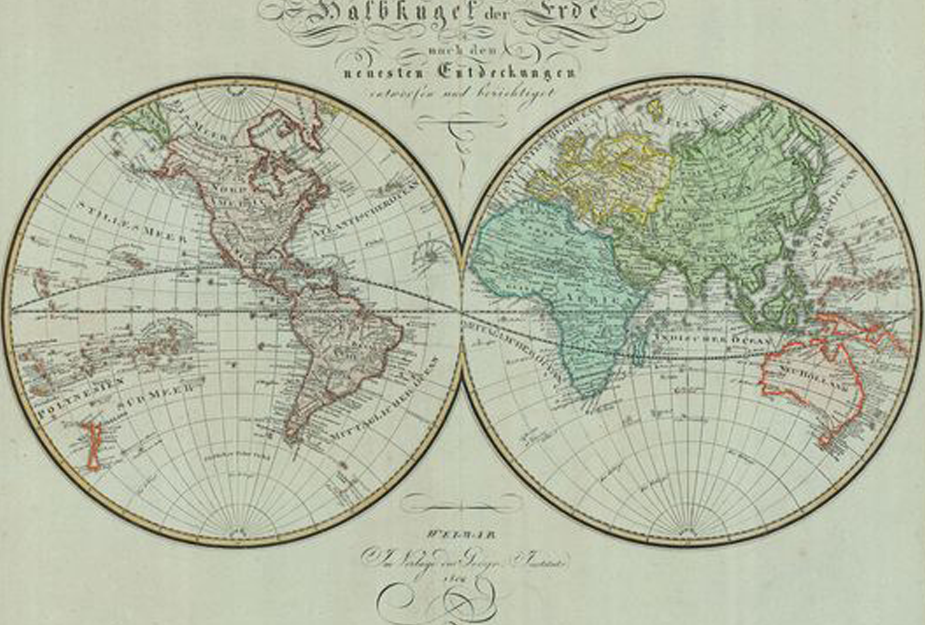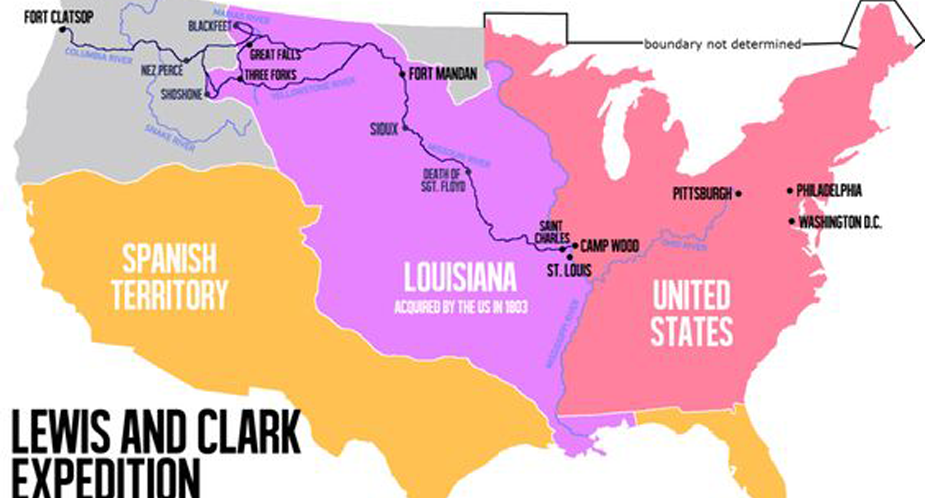Silhouettes builds costumes depicting American women 1740-1814. Picture the world in the middle of that, say 1804 as understood by a German in the map below:

The new United States had been a colony of England. The West Indies were part of England. India, and many African countries were part of England.
Prussia, Russia, the Ottoman Empire, and many European countries were at war with each other; changing boundaries and political “ownership”. Asia was, by their own choice, cut off from everyone – denying access, information, and trade to but a few Europeans until the mid to late 1800’s.
Napoleon Bonaparte and France was seeking world domination – wanting to take over England and all their holdings and their world Empire status. This was done politically, militarily, and by populating leadership with the Napoleon family, as we have been studying.
The United States, tied to and limited by England in its ‘infancy’, had won freedom to explore and expand with anyone it chose by 1804. It chose to get into the fray a bit.. grappling for a island countries and those off its own coast to secure its newly won borders.. plus trying to obtain and maintain the vast territories of North America to expand.
Lewis & Clark in 1804-06 (featured), allowed the US to understand its potential. Until then, other than trade with the mother country England and her allies, Americans were dependent on what they could produce themselves – meaning ideas and products.
Since English fashion followed French fashion, that meant American fashion followed French fashion too – with modifications for accessibility and availability.
While the world stage changed constantly through the period, the main fashion influence in America (and we have intentionally left out indigenous peoples) was 1740 to about 1840 the French Bourbon kings, English king Georges.. into the Napoleons and their wars, and then the introduction of associated countries of Spain, Greece, Italy, Russia, Scotland, alongside holdings such as the West Indies and north and south Africa with India.
This is especially noted in Regency styles worldwide, as distinct design elements of these countries were added to the French “little white dress” (discussed in the very beginning of this blog).
In the century to follow, there would be tremendous input from the entire world as England regained dominance, European boundaries were redefined and “settled” to some extent, the Asias were opened to European and American exploration, and most importantly – communication and transportation developed to the point persons around the world could share ideas and goods.
This long and complex story is told in the pages of our website. Look for a whole lot more of your favorite eras on there, plus the costumes in development to see how it works out today.
Thanks for sticking with our daily journey (and with this long post indulgence) as we pick up bits and clues to understand why things were, so we can build them as they were… Suzi Sellers, Proprietess

